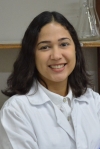Abstract:
Pyrometallurgical recycling of lead-acid battery (LAB) produces high-purity metallic lead (99.99% purity) through an energy-intensive and polluting process (1). The alternative hydrometallurgical method directly recovers lead oxide from spent lead paste, although many impurities may not be removed. We have experienced a breakthrough success in NovoPb, an ongoing project to implement a sustainable LAB recycling process in a 1 ton capacity pilot plant at Minas Gerais in Brazil(2).
During NovoPb, a 3-step hydrometallurgical process was used for synthesis of high-purity leady oxide derived from spent LAB samples of industry pastes. Dessulfuration with NaOH, followed by acetic acid and H2O2 leaching of LAB paste removed the impurities and generated pure lead acetate solution (3), a blank canvas. A lead complex with citric acid(4) was formed to remove lead from the solution in order to produce a high-purity nanostructured leady oxide, by calcining it at a much lower temperature (350°C) than usual smelted lead (1200°C), saving energy and reducing hazardous gas emissions.
The characterization of the 10 LAB pastes were performed by XRD, XRF, SEM/EDS and basic chemical analysis to successfully reproduce 20 recycling experiments at the laboratory. Factorial design was applied to determine optimal reaction conditions. 2.5 kg of lead citrate were synthesized and characterized by TGA, XRD, and SEM, then calcined to obtain leady oxide. Acid absorption, BET surface area, SEM/EDS, XRD and ICP-OES results show nanostructured leady oxide, 99,9% purity, with larger surface area and acid absorption than a lead oxide produced by traditional ball mill process.
This research is part of the Embrapii project of the Vitoria Innovation Center of the Federal Institute of Espirito Santo, in partnership with the University of Cambridge, Innovate UK, Brazilian companies Tudor MG de Baterias, Antares Reciclagem LTDA, Embrapii and the British company, Aurelius Environmental.
References:1. Ballantyne AD, Hallett JP, Jason D, Shah N, Payne DJ, Payne DJ. Lead acid battery recycling for the twenty-first century. Royal Society Open Science: 2018;
2. Ifes. Polo de Inovação firma convenio com empresas para implantar processo mais limpo na reciclagem de baterias [Internet]. 2018. Available from: https://www.ifes.edu.br/noticias/17758-polo-de-inovacao-firma-convenio-com-empresas-para-implantar-processo-mais-limpo-na-reciclagem-de-baterias
3. Yu W, Yang J, Li M, Hu Y, Hou H, Vasant R. A facile lead acetate conversion process for synthesis of high-purity alpha-lead oxide derived from spent lead-acid batteries. Society of Chemical Industry: 2018;(July).
4. Kumar RV. LEAD RECYCLING. UNITED KINGDOM; WO 2008/056125 A1, 2008. p. 35.
|




















